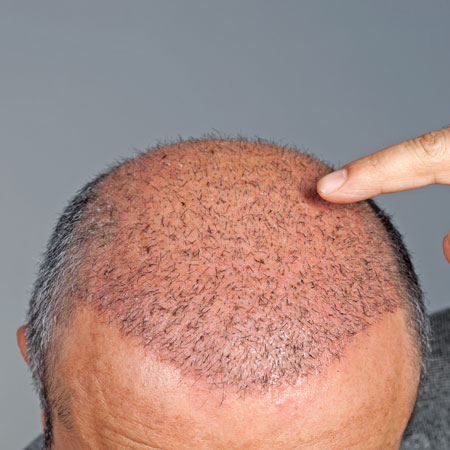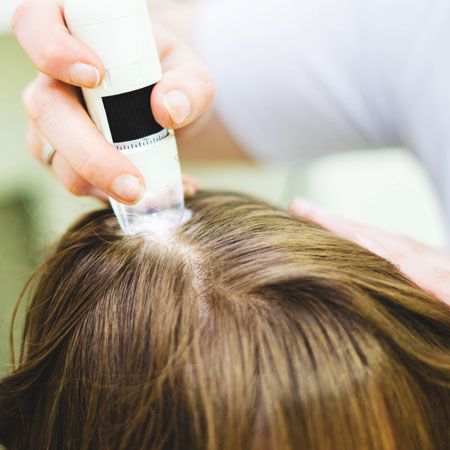
Hair Loss Treatments

Any treatment recommendations have to be based on the individual, their medical history, family history and their current degree of thinning.
It is also critical during assessment their potential for further thinning is determined, particularly when a patient is considering hair replacement surgery.
Providing it has been established the hair loss is entirely due to androgenetic factors, the following treatments are indicated:
- Topical minoxidil solution in strengths of 5% or 6%
- Oral finasteride (Propecia)
- Scalp micropigmentation
- Laser cap therapy
- Hair replacement surgery
Topical Minoxidil Solution
Topical Minoxidil was discovered when the drug was originally used as an oral treatment for hypertension (high blood pressure). A side effect of this drug was excessive hair growth (hypertrichosis).
The drug was then trialled as a scalp application in 2% solution which proved effective in growing hairs of better texture and length.
Over the years, the strength of this drug has been increased to improve its effect and nowadays is a good starter treatment for males with slight thinning.
Minoxidil is a potent vasodilator (increases blood supply to the area). However it appears to have several actions which prolong the growth phase of the hair follicle called Anagen.
When hair follicles are diminishing as an effect of androgenetic hair loss, the Anagen phase shortens and with each cycle will shorten further until the follicle is no longer producing a hair shaft.
Minoxidil helps minimise this effect but is only useful in males with slight, early thinning but is extremely useful in females with most levels of thinning.

Oral finasteride (Propecia)
This drug was also discovered when being used to treat a condition called benign prostatic hyperplasia (non-cancerous enlargement of the prostate gland). A side effect of the drug was improvement in the scalp hair.
The company that manufacture the drug subsequently carried out a series of clinical trials including a double-blind placebo trial involving over 3000 males. The results of this trial resulted in the drug becoming licensed to treat male androgenetic alopecia.
Propecia was shown to halt any further deterioration in 83% of users and generate a degree of improvement in 66% of users.
The degree of improvement varies between users from minimal to excellent and improvement can continue to slow for over 24 months, sometimes longer. When full improvement has been obtained, this should remain for as long as the patient continues to take the drug.
Side effects are minimal and occur in approximately 2% of users but can include:
- Loss of libido
- Gynocomastia
Other side effects have been reported worldwide including:
- Testicular pain
- Depression
Use of the drug is on a prescribed basis only and its use and effects should be monitored. Propecia suppresses the conversion to DHT by up to 70%.
At Pulford Medical Centre (OR Northwest Trichology Centre) we review patients frequently when taking this drug so the patient knows exactly how well they are progressing.

Scalp Micropigmentation
This is a clever technique of tattooing the scalp to create the illusion of hair follicles or density.
Until relatively recently the concern was that the pigments used could fade and develop a ‘blue’ tinge.
New pigments, however, fade over approximately three years but do not develop the ‘blue’ tinge historically seen with tattooing procedures.
This technique can be very effective in producing a shaved head look or to give the illusion of greater density in thinning hair.
Laser Cap Therapy
The use of lasers to induce hair growth is still in its infancy and their efficacy is still as yet undetermined in real terms.
Research suggests using specific low level laser light (LLLT) can induce hair growth, but it is yet to be determined whether this growth is subsequently maintained.
When used in conjunction with oral Propecia and/or minoxidil LLLT appears useful, but it is then difficult to establish which treatment is generating the improvement.
The benefit of an LLLT system is it can be used in the privacy and comfort of your own home but needs to be used consistently.
At the present time the Lasercap appears to be the most effective and costs £1,995.00.



